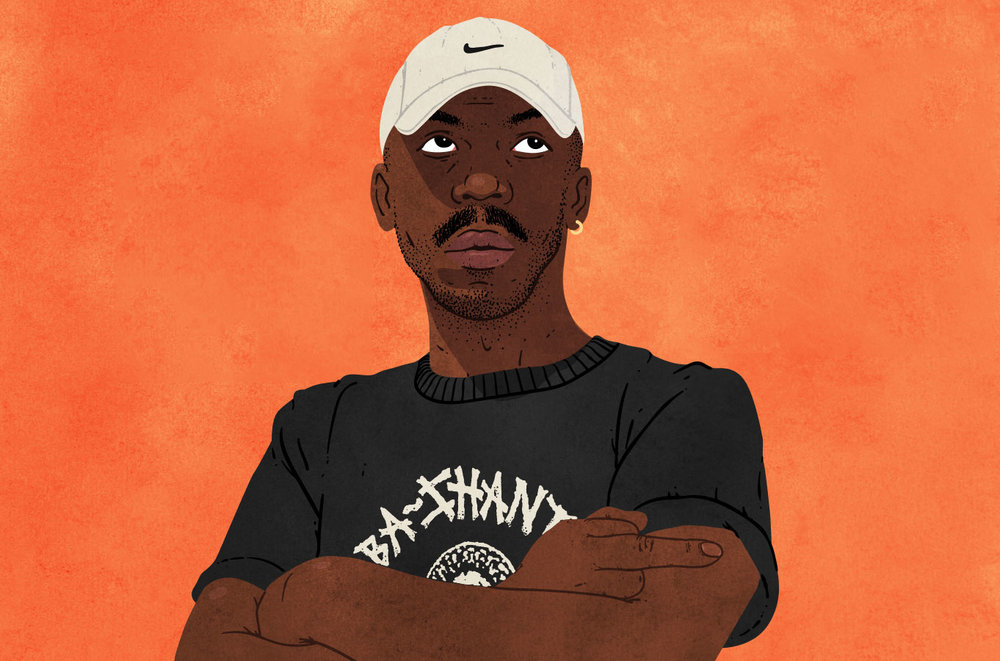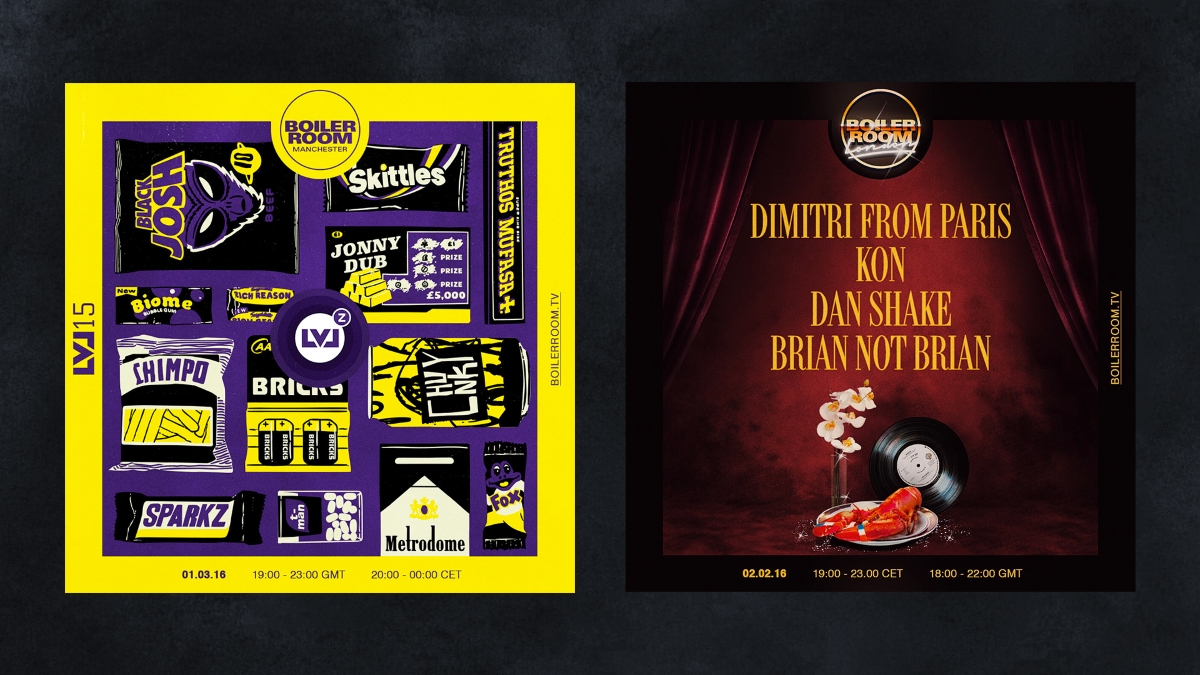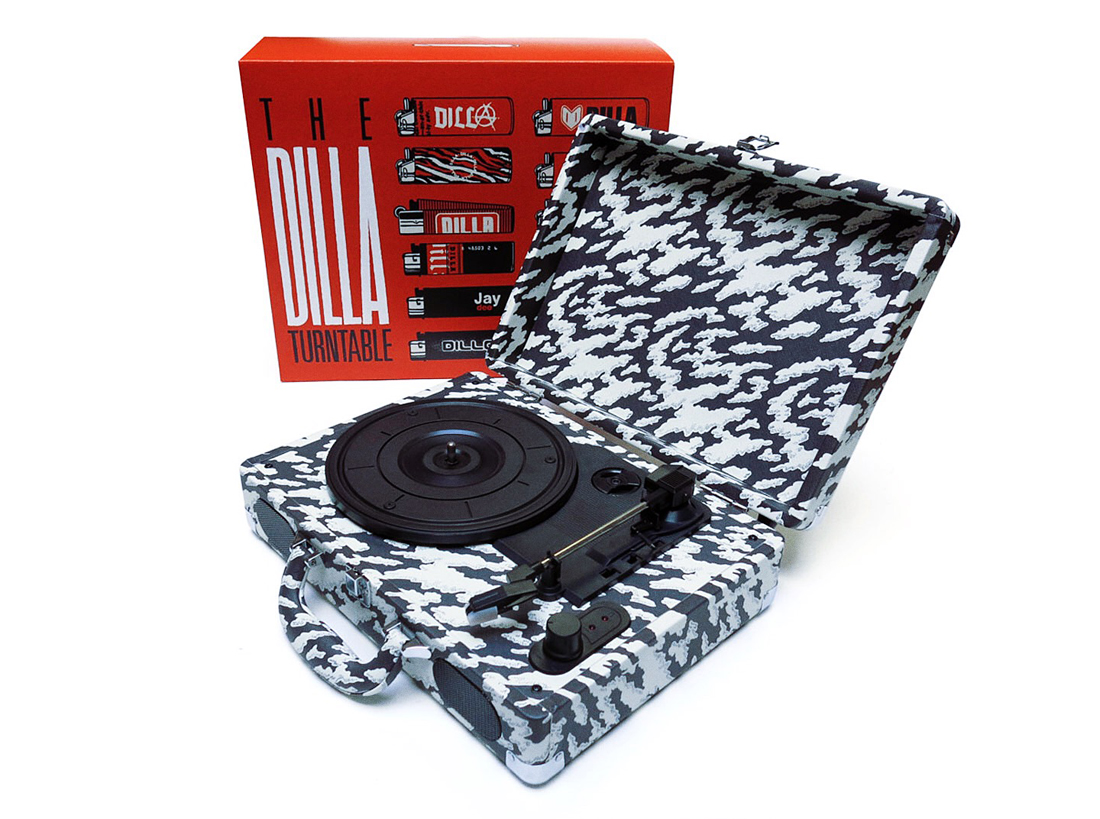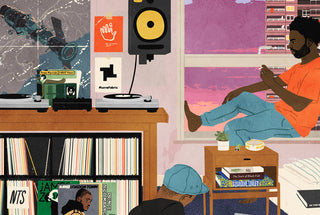By the time you’re reading this, London designer and illustrator, Joe Prytherch, will already have transitioned to full-blown freelancer under his Mason London moniker/studio, leaving his Art Director position at Boiler Room after years of dedicated work. Prytherch has firsthand witnessed the evolution of music platforms and streaming services, and was responsible for some of the most remarkable flyers, posters, and videos for Boiler Room, the ultimate online music broadcasting platform, that commissions and streams live music sessions from emerging and experimental artists around the world. He’s also done work for platforms like The New Yorker and clients like the J Dilla estate.
London is one of the creative metropolises of the world—the forefront of vibrancy and exciting, new work. It’s no wonder that Joe Prytherch calls this place home. After some back and forth emails, I finally got the chance to sit down with Joe Prytherch for an interview, talking about his creative process, what it was like working for Boiler Room and creating work for Stones Throw Records, and how he got his start in the arts.

MANOS NOMIKOS: Who is Joe Prytherch and how did you get into the world of arts?
JOE PRYTHERCH: I’m a designer and illustrator from London and I got into the world of arts at a very young age. When I was about 4 or 5, my parents used to encourage me to draw by bringing back stacks of used printer paper from their offices and I’d draw “Transformers” comics that stretched over hundreds of pages. Then, in my teenage years, I [was] given a computer one Christmas and taught myself how to use Photoshop. I made knock off Toy Machine T-shirts and flash animations that I uploaded to Newgrounds—which was like Youtube before Youtube, but filled with loads of questionable animations made by 13 year olds.
“Nowadays, I appreciate the importance of planning and don’t even sit down in front of my computer until I have a fully formed idea in my head.”
As I got older, I became more interested in design for music. I was spending all the money I had on CDs and used to carefully analyze their artwork as well as watching music TV every night after school. I studied film making at university; in the second year I made what I thought was a very tasteful artistic film about a man’s encounter with a prostitute, but it turned out terribly and so for my third year project I made a film about an asteroid destroying the earth. After university, I decided I was more interested in design and got lucky by landing a job in a small studio in Shoreditch.


How did your artistic style evolve over the years?
In the early days of working as a designer, I would do a lot of things by trial and error, rarely ever planning what I was going to design or animate. I used to start animations with a great idea for an opening sequence but had no idea how it would end, and I’d approach graphic design in the same way. As a result, anything that I did finish was a bit of a mess. Nowadays, I appreciate the importance of planning and don’t even sit down in front of my computer until I have a fully formed idea in my head.
I only really started illustrating seriously about 6 years ago. I was at a point where I was designing a lot of work for very unimaginative corporate clients and I’d become obsessed with three very similar illustrators: Dust La Rock, who used to be the art director at Fools Gold Records; So-Me, who was the guy behind Ed Banger’s artwork; and Parra, who used to do a lot of work for Stones Throw Records. They all drew very colorful, fun illustrations, and I wanted to inject a similar excitement and humor into my work.
A 2017 lyric video Joe created for Cadenza & Allan Kingdom’s “Vibes” on limited time and budget. “I wanted to tell a story through the video and not for it just to be typographic.”
I illustrated under the name Mason London to add a bit of anonymity, as I knew what I was going to draw early on probably wouldn’t be great and I wanted to be able to pull the plug on the whole operation if I needed to—like an arty version of a witness protection program. Initially my illustrations mimicked what I had seen others do, but over time I slowly started developing my own style. Initially I didn’t have a Wacom tablet so just drew with the trackpad and the pen tool in Illustrator. As you can imagine this was limiting, but did mean that I could draw in front of the TV. My first drawings were flat and cartoony and a lot more abstract, but over time I started drawing in a much more representational way, considering things like lighting and references to pop culture and how this would affect the mood of the illustration.
Boiler Room is one of the most progressive online platforms. How did you get the job at Boiler Room and what’s a day-in-the-life of work there?
I just saw the job listed on their site. I was lucky as by this point I had already done a fair bit of freelance work for Stones Throw Records and I was interviewed by Sofie who used to work at the label. She was familiar with some of the designs I had done for a Madlib tour and I think this definitely helped me get a foot in the door.
A day at Boiler Room is, exciting, hectic, and fast-paced—I might be working on 2-5 different projects a day but I’m given a lot of creative freedom which I’m very grateful for.

I am sure you have seen many live Boiler Room shows as well. Most memorable ones?
My favorite was the Skepta, Stormzy, and The Square show at the ICA in December 2014. It was just as the second wave of grime popularity was about to break. Stormzy debuted “Know Me From” live at the show and everyone knew the lyrics to “Not That Deep” and finished his sentences for him.
How is it jumping from illustration to design to video and animation?
I love it. Like I say, I didn’t study design at university, I just worked it out as I went along and I approached illustration and motion graphics in the same way. If there is a piece of artwork or a job that I thought could benefit from me learning something new, then I’d look for a Youtube tutorial and do it. Plus for a long time at Boiler Room it was a necessity as I was the only designer for about a year and had to have variation in my style so that the art output didn’t get too stale.
Where do you find your inspiration?
It can be from anywhere really, I start by taking whatever I’m designing for and immersing myself in it.
As a couple of examples: Boiler Room did some grime shows in Japan last year and I’d just been there on holiday so I did a load of artwork based on all the vending machines I’d seen. Then recently I’ve been listening non-stop to the new Kendrick album and that’s inspired me to make a load of quick illustrations based on anything from the themes in the album to the album artwork—which I love.
I find that the most effective way of getting inspired is not to force yourself to come up with ideas, but to keep a project in the back of your mind as you go about your day and then out of nowhere the answer will just come to you—maybe based on something you see but sometimes out of a weird connection your brain just decides to make.

A couple months ago you also designed a portable turntable for the Estate of J Dilla. Quite an experience?
That’s one of the most exciting projects I’ve ever worked on, yeah. Back when I started illustration it was a dream of mine to work for Stones Throw Records, partly because I had grown up listening to their music—particularly Dilla—and partly because Parra, one of my illustrator heroes, had done a load of work for them. Through a cold call email to the contact address on the Stones Throw site, I ended up working on a set of T-shirt ideas, one of which ended up becoming Madlib’s 2012 European tour T-shirt.
During this work, I had mentioned to the art director, Jeff Jank, that Dilla was a hero of mine. He introduced me to Egon, the creative director of Dilla’s estate and over the next few years I ended up doing artwork for Dilla’s posthumously released 12” The Anthem, a T-shirt, and the portable turntable. Both were dream jobs for me and I was super lucky to do them.
Joe Prytherch: “In October 2016, I took it upon myself to make an animated music video for grime artists JME and Tempa T’s track ‘CD is Dead.’ So that I wouldn’t get a copyright strike on youtube and get it immediately taken down I made a shoddy disco edit of the track. JME saw the video and posted about it on Facebook and Twitter.”
What’s on your music playlist these days?
The past couple of weeks it’s been almost exclusively Kendrick’s DAMN. But before that, 808ink are a personal favourite, as well as NxWorries, Isaiah Rashad, and a band from Texas called Khruangbin.
What’s next? Another exciting year for the Boiler Room and the world?
I’m actually going freelance in May with a plan to set up my own studio, so I’ll have a more varied output over the next year. I’m currently working on projects for Touching Bass who have a show on NTS London, Bradley Zero of Rhythm Section, Sub Club, Jack Steadman of Bombay Bicycle Club, and Assemble, the architecture collective that won the Turner Prize last year.
You can follow me on Instagram.com/masonlondon if you want to see what I’m up to at any given time.
***
For further reading, check out our 2010 interview with Peanut Butter Wolf, the founder of Stones Throw and the articles below:
Let the Music Speak :: A Conversation with Beatmaker & Producer Knxwledge by Senay Kenfe
The One They Call Parra :: 10 Ways Piet Parra Introduced His Art to the Masses by Maarten
A Conversation with Allan Kingdom on His Progression & ‘Northern Lights’ by Tom Winslade

